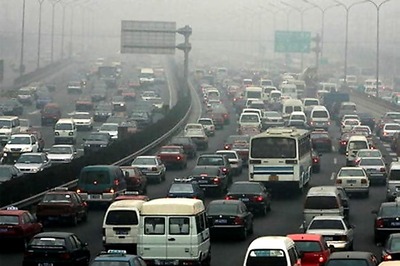
views
HYDERABAD: In the quiet bylanes of Mohamaddiya Nagar, near Begumpet, there stands a 50m long wall separating the huts from the adjoining waste land. Whitewashed and high, it serves a dual purpose. One, it keeps the waste away from slum dwellers; two, it keeps even the slum dwellers away.Blame not the wall, for it has a life of its own, especially when it rains. Just above it pass numerous electric wires kissing each other, with insulation torn at many points, dangling and touching the wall at various points in its length. The monsoons turn the wall, which otherwise is a good insulator, to conduct the electric current on offer, sending shocks through anyone who even dares to put a finger on it. That the adjacent walking path for the residents is just four feet wide only makes the chances of contact even higher.Turn eastward to a slum adjoining a polluted naala, off the Hussain Sagar lake. A game of carroms with friends and family is the slum dwellers’ idea of a carefree pastime. Beneath their feet though, unaware to these players, pass a number of blue and black wires, crisscrossing pools of water, buckets of washed clothes and an odd baby sitting on the tiled floor. When it rains, the slum is flooded, and the wires lie submerged. When the sun shines, and the wind blows, wires passing at doors’ height swing and touch each other, waiting for fate to blow a cruel strike. Dangling wires, open transformers, zero pole clearance, tangled and tardy wiring, torn insulation, electric poles passing through rooftops, wires as clothesline, long distance transmission towers passing overhead- the list of mismatching electric safety precautions with the ever growing needs of slum dwellers in Hyderabad has become a cause for concern now, especially after the occurrence of two fires in the past three weeks in city slums. The deaths and injuries caused by the recent mishaps have prompted dwellers of other slums in the city to ask, “What causes short-circuit? Will our house burn too?”Awareness need of the hour“Safety is zero in Hyderabad’s slums. There may be a temporary roof over our head, access to electricity and water, but the wires are so casually drawn from the poles to the houses that people regularly get minor shocks,” says Shivrani, a 30-year-old from Musheerabad who works with the NGO, Association for Promoting Social Action (APSA), that has its presence in over 200 slums across the five zones of the city.“The wires pass through the cloth curtains hanging as the front door or touch the tarpaulin sheets lying the roof. During monsoons when water accumulates, it causes worry among many slum dwellers,” she added. “Usually in the borders of most slums, a number of welding and small industry shops (lathe, garage) are set up. They draw tremendous power and there is a lot of voltage fluctuation. The sudden drawing of power causes sparks since the wiring is not very efficient.”Sheikh Nayeem of Rasoolpura, who is also a slum coordinator for the NGO Bhoomi, seconded Shivrani’s thoughts. “There are so many wires drawn from a single pole, that all end up entangled. You can clearly see wires protruding from torn insulation at many points. Many people get shock. In fact, a cow died a few months ago, after getting shock from a dangling wire,” he added. Burns and mild shocks, he said, were as common as they could come, so were small sparks from the open ground-level transformers in the colony.In the settlement at Chaderghat, near Afzal Gunj, the situation is even worse. Residents point to the guy wire (the support wire of the pole fastened to the ground) passing through rooftops, as also the sight of electric poles set up adjacent to front doors. And in Shere Gate, a colony near Abids, there is a 100 KVA transformer located right outside a house with zero adherence to required clearance, and exposed distribution wires passing at arm’s length. No danger, say officialsOfficials with the Central Power Distribution Company of Andhra Pradesh Ltd (CPDCAPL), the body which is authorised to provide access to electricity and determine total electric load of new houses, defended themselves against the dangerous wiring in slums. “We provide slums with electricity and set up poles, and other electric utilities, as required, adhering to all requisite safety clearances. But new dwellers build huts around these poles, and do not adhere to safety norms. It’s upto the civic corporation to ensure slums do not overgrow, and to ensure electric safety is kept in mind during future slum projects,” said an administrative official with the (CPDCAPL). Explaining that transformers were set up depending on available space, while the density of wires drawn from a pole depended on the total load in an area, the official also made it clear that electric poles were set up at a minimum clearance of four metres from the service pipe. “Any violation of the clearance space is because of the aggressive settlement taking place in city slums.”Officials with the GHMC too have taken serious note of the recent fire mishaps, and are hoping the Rajiv Awaz Yojana (RAY) programme for slum development will prevent any such mishap from occurring in the future “If the land is not disputed, we plan to include even temporary settlements under the scheme. This way, even nomadic people from other states and districts will get shelter and live in safe conditions”, said Vishwanathu, Project Director for RAY. But till that happens, people like Rahim, a fruit seller living in a slum near Mehdipatnam, are waiting for the day when the overhead wire, doesn’t ultimately cost them their head.This one is a real shockerHow much would your monthly electricity bill be, if your electrical assets were just a fan and two tubelights? Below `200 for sure, one could safely guess. But for residents of atleast five slums, the bill has been in excess of `500, with the CPDCAPL receipt showing usage in excess of 300 units (KWh) a month!“How can this much usage be charged against us? We barely switch on the lights during daytime, and there are also frequent power cuts. And yet, we get a bill in excess of `500!” lamented Sivaraman, a dweller near Indira Nagar. Gauzia, a resident of a slum near Tank Bund showed receipts in excess of `400 despite her usage being restricted to one TV, two fans and a tubelight.The problem may lie with the obsolete analog meters in use in the slums despite a drive by CPDCAP to replace all such meters with digital ones. An official with the billing section at CPDCAP said that the meters would soon be replaced in the slums as well. “Any complaint with regards the billing can be brought to the notice of our Integrated Customer Service. There could be errors in analog meters, and our officers will look into it”, he added, saying that it was difficult to state without personally visiting the slums, why dwellers received such massive consumption bills. CPDCAP is currently in the process of issuing new electricity tariffs from April 1 this year.




















Comments
0 comment